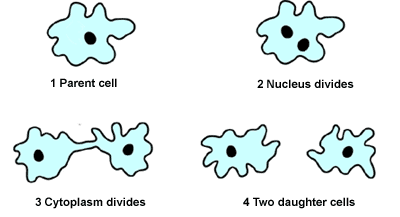Reproduction is known as biological process by which an offspring (or several individual offspring) is brought forth by its producers known as “parents.” There are two types of reproduction: sexual and asexual.
Sexual reproduction is the primary method we know in procreation. Usually, it is made possible when each of the two parents contribute genetic makeup through a process called ‘intercourse.’ This kind of reproduction is usually known to animals and humans.
On the other hand, asexual reproduction brings forth offspring even without contributing factors from another organism through sexual intercourse. Plants are the usual species known to reproduce themselves through asexual means. However, there are certain kinds of reptiles, fish, amphibians and even birds that can reproduce themselves asexually.
In this article, we are only going to talk about the latter kind of procreation or breeding process, the asexual reproduction. This kind of reproduction has several forms. Included to these forms are:

Budding
- The offspring comes out from the body of the parent. Perfect example of this form of asexual reproduction is the hydra.
- Hydras are multi-cellular organisms that live in unpolluted fresh water bodies. When food is abundant, hydras can procreate by producing buds inside the walls of their body. As these buds mature, they simply break away and form into individual hydras.

Gemmules
- The offspring is brought out of the parent’s system as a form of cell mass. It develops into full bloom outside the parent’s body.
- Internal buds also known as gemmules are present in sponges. Sponges are commonly known to reproduce using this kind of asexual reproduction.

Fragmentation or Clonal Fragmentation
- The main organism breaks down its body to form individual parents that can produce offspring. Nevertheless, this splitting away from the original body needs not to be intended. Sometimes, it can occur due to damage by natural means or inflicted by predator or humans.
- Offspring are clones of the original organism.
- Planarians are flat worms that use this kind of reproduction. They can grow breed through severing a part of their body. The detached part soon develops into another planarian.
- Other examples of organisms breeding through this kind of asexual reproduction are the: cyanobacteria, molds, lichens, annelid worms and acoel flatworms.

Regeneration
- In this kind of asexual reproduction, a body part of the parent comes off it and develops totally into another organism that is considered as purely distinct individual. Best examples for this are the echinoderms like starfish, sand dollars, brittle stars, sea cucumbers and sea urchins.

Parthenogenesis
- From the Greek words “parthenos” and “genesis” which mean “a virgin” and “birth” respectively.
- The parent produces an unfertilized egg but can develop into another individual.
- In this case, the offspring usually automatically copies the gender of the mother, so they became female. However, aphids are an exception.
Wasps, ants, certain kinds of reptiles, amphibians, fish (like the hammer-head shark and black tip shark) and some rare species of birds, have the ability to reproduce through parthenogenesis

